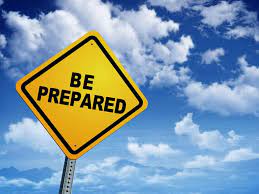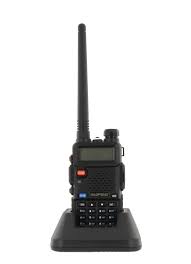Emergency Preparedness

EMERGENCY COMMUNICATIONS
Why do we need Emergency Communications?
In the event of an emergency, you want to be as prepared as possible. The ability to LISTEN and be aware of current events and COMMUNICATE with others can be CRITICAL! In an emergency, our conventional means of communications may be interrupted or disabled. Therefore, it will be necessary to have alternate means of listening and communicating. Emergency Communications can be a lifeline if you need help!
What is an Emergency Communication Plan?
An Emergency Communication Plan is a document that provides clearly stated guidelines, contact information, and procedures for how information, that requires immediate action, should be shared during all phases of an emergency. An effective plan ensures that people are safe during potentially fatal emergencies.
Types of Radios
AM FM (Amplitude Modulation and Frequency Modulation)
Type of radio in which the sound of the program material, usually coming from a radio studio, is used to vary a carrier wave of a specific frequency, then broadcast.
FRS (Family Radio Service)
FRS radios are found as small handheld radios. They're easily found in most sporting goods stores and department stores. They're range is generally under 2- miles. They do not require a license to use.
CB (Citizen Band Radio)
CB radios have been around since the 1970's. They're an inexpensive form of communication and can be easily found for purchase. Their range can be a mile to several miles depending on certain variables.
MURS (Multi-use Radio Service)
MURS radios are 2-watts and said to have a range of up to 5-miles. They are not as powerful as GMRS radios, but offer more power than FRS radios, and do not require a license.
GMRS (General Mobile Radio Service)
GMRS radios are hand-held mobile radios, for use on the General Mobile Radio Service, which is a licensed radio service. The most common use of GMRS channels is for short-distance, two-way voice communications. Typical hand-held radios have a 1–2-mile range, however some mobile units with higher antennas can have a range up to 5-miles. Use with a repeater (automatic radio-relay station) will also increase range.
Ham (Amateur Radio)
Ham radio is the use of radio frequency spectrum for purposes of non-commercial exchange of messages, self-training, wireless experimentation, private recreation, contesting, and emergency communications. The amateur radio bands enable communications across a city, region, country, continent, or even the world. An amateur radio license is required.
Shortwave
Unlike other types of radio equipment, Shortwave radio operates on the frequencies between the FM and AM bands on your standard radio set. Shortwave has the unique characteristic of traveling very long distances, said to be over several thousand miles. Besides their use in international broadcasting, shortwave radio frequencies and techniques are used to relay telephone and telegraph communications over great distances. Similar to ham radio, shortwave is also an option for hobbyists. Licensing regulations do apply.
EMERGENCY COMMUNICATIONS, EQUIPMENT, ETC.
https://www.americanstates.us/emergency_communications_equipment_etc.php




 Follow
Follow

